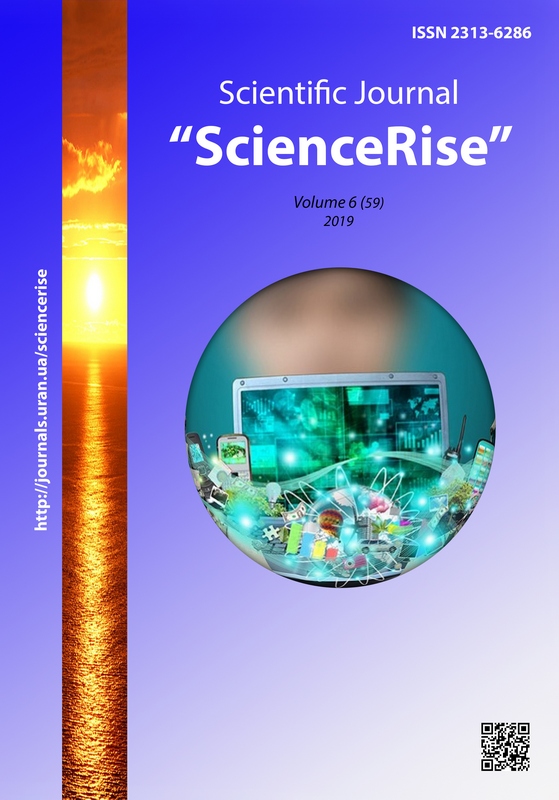Development of the method of cybernetic planning as a tool of the modern development development of nature reserve fund
DOI:
https://doi.org/10.15587/2313-8416.2019.172245Keywords:
natural reserve fund, sustainable development, method of cybernetic modeling, environmental principles, economic growthAbstract
In order to implement qualitative economic transformations in the country from the priorities of consumer use of natural resources to innovative technologies of “conscious” planning of the economy, it is necessary to take into account environmental priorities that are of strategic importance for the entire population of the state. As of today, it is the method of cybernetic planning that is able to combine environmental, administrative and economic and social components when creating a model of a future protected object or territory. The cybernetic planning method is an innovative method, a symbiosis of state environmental imperatives and strategic economic objectives. The creation and expansion of protected areas are the priority tasks of the state policy of Ukraine, so a mechanism is proposed that will meet the needs of the modern market economy of the country and society; have a permanent informational basis; high-quality remote control tools and the possibility of forming a project "turnkey"
References
Bogdanecz, V. A., Vlayev, A. A. (2014). GIS Mapping of Lands of Natural Reserve Fund. Pryroda Zakhidnoho Polissia ta prylehlykh terytorii, 11, 40–44. Available at: http://www. nbuv.gov.ua/UJRN/Pzp_2014_11_8 Last accessed: 15.05.2019
Shevchuk, V. V., Ivanik, O. M., Lavrenyuk, M. V., Lavrenyuk, V. I. (2012). Modelling of the Impact of Hazardous Geological Processes on the Functionality of Pipe-Transporting Nature-Technical Systems. Geological Journal, 2, 66–73. doi: http://doi.org/10.30836/igs.1025-6814.2012.2.139059
Gvozdyak, V. M. (2006). The mathematical modeling' features of organic systems. Filosofskyi almanakh, 56. Available at: https://www.filosof.com.ua/Jornel/M_56/Hvosdiak.htm Last accessed: 10.04.2019
Samoilenko, V. M., Korogoda, N. P. (2006). The econet's geoinformation modeling. Kyiv: Nika-Centr, 224. Available at: https://www.twirpx.com /file/1920936/ Last accessed: 02.04.2019
Kovalchuk, I., Mkrtchyan, O., Mikhnovich, A. (2017). The potential of geoinformation technologies in solving constructive and geographic problems. Ecological geography, 10, 49–59. Available at: http://geography.lnu.edu.ua/wp-content/uploads/2017/10/52623592.pdf Last accessed: 07.06.2019
Peresadko, V. A., Bodnya, O. V. (2010). Geographical modeling of national natural parks. Kharkiv: Nika, 28. Available at: https://core.ac.uk/download/pdf/46588426.pdf Last accessed: 07.05.2019
Allan, K. (2014). Achieving resilience in the cyber ecosystem. Insights on governance, risk and compliance, 27. Available at: https://www.ey.com/Publication/vwLUAssets/cyber_ecosystem/$FILE/EY-Insights_on_GRC_Cyber_ecosystem.pdf Last accessed: 13.04.2019
Linkov, I., Kott, A. (2018). Fundamental Concepts of Cyber Resilience: Introduction and Overview. Cyber Resilience of Systems and Networks. Berlin: Springer, 1–25. doi: http://doi.org/10.1007/978-3-319-77492-3_1
MacKinnon, M., Rampado, S., D’Souza, S., Bryski, J. (2016). The changing faces of cybersecurity – Closing the cyber risk gap. Canada: Deloitte Design Studio, 44. Available at: https://www2.deloitte.com/content/dam/Deloitte/ca/Documents/risk/ca-cyber-talent-campaign-report-pov-aoda-en.PDF Last accessed: 17.06.2019
Law Nature Reserve Fund of Ukraine (1992). Zakon Ukrainy No. 2456-XII. 16.06.1992. Available at: http://zakon5.rada.gov.ua/laws/show/2456-12 Last accessed: 20.04.2019
On Approval of Methodological Recommendations on the projects' development for the creation of natural territories and nature reserve fund's objects (2018). The Order of Ministry Ecology and Natural Resources of Ukraine No. 306. 18.08.2018. Available at: https://zakon.rada.gov.ua/rada/show/v0306737-18 Last accessed: 20.04.2019
Hill, R., Figgis, P. (1999). A conservation initiative: ACF Wilderness and Indigenous Landscapes Policy. Habitat Australia, 27 (1), 8–19.
Wezemael, V., Joris, E. (2010). Modulation of Singularities – a Complexity Approach to Planning Competitions. The Ashgate Research Companion to Planning Theory. Conceptual Challenges for Planning Theory, 6 (61). Available at: https://www.academia.edu/705122/Modulation_of_Singularities_a_Complexity_Approach_to_Planning_Competitions._In_The_Ashgate_Research_Companion_to_Planning_Theory._Conceptual_Challenges_for_Planning_Theory._Eds._Jean_Hillier_and_Patsy_Healey._Ashgate Last accessed: 20.03.2019)
Karadimitriou, N. (2010). Cybernetic Spatial Planning: Steering, Managing or Just Letting Go? Conceptual Challenges for Spatial Planning, 425–446. Available at: http://discovery.ucl.ac.uk/1328462/ Last accessed: 02.04.2019
Downloads
Published
Issue
Section
License
Copyright (c) 2019 Tetyana Nikolaychuk

This work is licensed under a Creative Commons Attribution 4.0 International License.
Our journal abides by the Creative Commons CC BY copyright rights and permissions for open access journals.
Authors, who are published in this journal, agree to the following conditions:
1. The authors reserve the right to authorship of the work and pass the first publication right of this work to the journal under the terms of a Creative Commons CC BY, which allows others to freely distribute the published research with the obligatory reference to the authors of the original work and the first publication of the work in this journal.
2. The authors have the right to conclude separate supplement agreements that relate to non-exclusive work distribution in the form in which it has been published by the journal (for example, to upload the work to the online storage of the journal or publish it as part of a monograph), provided that the reference to the first publication of the work in this journal is included.

